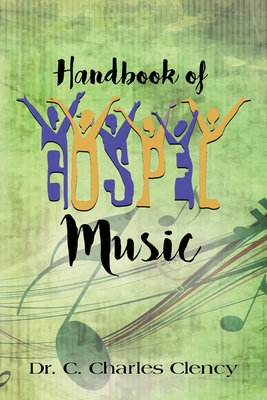Handbook of Gospel Music

Handbook of Gospel Music
Black gospel music is music and lyrics of African American culture that express good news. The primary elements are rhythm and improvisation. The origins are in West African culture, American slavery, and theology.Although from various regions of Africa's West coast, slaves were herded together under a harsh American system of slavery. It was from these people that this music sprang. Through the fusion of African musical traditions and European musical culture, slaves created a style that has influenced musical development in America. By unique rhythmic and tonal patterns, indigenous vocal quality, call-and-response form, and percussive instrumentation, Black music formed after the slave trade has had tremendous effect on America's musical development.During the Great Awakening, slave songs, work songs, field calls, and protest songs were heard, along with revival songs. This was a large evangelistic movement of mass revivals between 1730 and 1910 intended to Christianize many, including Africans. The music of the Awakening highlighted traditional hymns of whites. These were accepted by the Blacks but gradually gave way to preferred livelier evangelistic hymns. These hymns met the needs of the mass revivals, and the singing by Blacks reflected their own interpretations of white hymns and revival songs.Many of the above-listed song types were later called spirituals. They have a striking rhythmic quality as well as similarity to African songs in form and intervallic structure. The lyrics recall the experiences of slavery, suffering, and struggle, and express hope for relief in anticipation of a better day. Choirs of Historically Black Colleges and Universities popularized the appeal of spirituals. Yet meter hymns and quartet songs were the preferences of many congregations. These led ultimately to gospel music, a more advanced style of musical expression.Gospel music is recognized by dotted rhythms of 16ths, 8ths, quarter notes, and triplets. Syncopation is prominent and may lead to handclapping on the second and fourth beats. Other traits are verse and refrain, improvisation, call and response, simple to complex harmonies, passing tones, extended sections called vamps, excessive repetition, and homophonic and polyphonic textures. Often, there is swaying, foot-tapping, and sometimes 'holy dancing.' Recently, a new trend has occurred from the influence of technology, pop music, and youthful exploration. It results in new modal concepts, rhythms, tone pat
PRP: 148.39 Lei
Acesta este Prețul Recomandat de Producător. Prețul de vânzare al produsului este afișat mai jos.
133.55Lei
133.55Lei
148.39 LeiLivrare in 2-4 saptamani
Descrierea produsului
Black gospel music is music and lyrics of African American culture that express good news. The primary elements are rhythm and improvisation. The origins are in West African culture, American slavery, and theology.Although from various regions of Africa's West coast, slaves were herded together under a harsh American system of slavery. It was from these people that this music sprang. Through the fusion of African musical traditions and European musical culture, slaves created a style that has influenced musical development in America. By unique rhythmic and tonal patterns, indigenous vocal quality, call-and-response form, and percussive instrumentation, Black music formed after the slave trade has had tremendous effect on America's musical development.During the Great Awakening, slave songs, work songs, field calls, and protest songs were heard, along with revival songs. This was a large evangelistic movement of mass revivals between 1730 and 1910 intended to Christianize many, including Africans. The music of the Awakening highlighted traditional hymns of whites. These were accepted by the Blacks but gradually gave way to preferred livelier evangelistic hymns. These hymns met the needs of the mass revivals, and the singing by Blacks reflected their own interpretations of white hymns and revival songs.Many of the above-listed song types were later called spirituals. They have a striking rhythmic quality as well as similarity to African songs in form and intervallic structure. The lyrics recall the experiences of slavery, suffering, and struggle, and express hope for relief in anticipation of a better day. Choirs of Historically Black Colleges and Universities popularized the appeal of spirituals. Yet meter hymns and quartet songs were the preferences of many congregations. These led ultimately to gospel music, a more advanced style of musical expression.Gospel music is recognized by dotted rhythms of 16ths, 8ths, quarter notes, and triplets. Syncopation is prominent and may lead to handclapping on the second and fourth beats. Other traits are verse and refrain, improvisation, call and response, simple to complex harmonies, passing tones, extended sections called vamps, excessive repetition, and homophonic and polyphonic textures. Often, there is swaying, foot-tapping, and sometimes 'holy dancing.' Recently, a new trend has occurred from the influence of technology, pop music, and youthful exploration. It results in new modal concepts, rhythms, tone pat
Detaliile produsului










